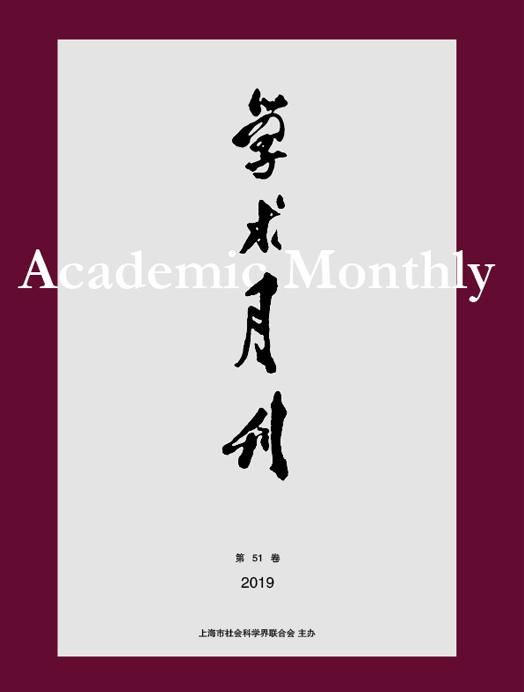Citation:
Jie CHEN, Xiaoxin GUO and Shihu ZHONG. Spatial and Temporal Characteristics of Discrimination against Rural Household in China’s Urban Migrant Labour Market and Its Influencing Factors[J]. Academic Monthly, 2022, 54(7): 53-69.

Spatial and Temporal Characteristics of Discrimination against Rural Household in China’s Urban Migrant Labour Market and Its Influencing Factors
-
Abstract
Based on the persistence of China’s household registration system and the long-term division of the urban-rural dual structure, it is argued in the framework of information economics that rural household, as a negative stereotype, leads to the discrimination against rural household in the urban migrant labour market under information asymmetry. Based on the data of China Migrants Dynamic Survey (CMDS) from 2011-2017, the Oaxaca-Blinder model is used to calculate the degree of discrimination against rural household migrant at the national level over the years, and it is found that wage discrimination against rural household migrant in China’s urban migrant labour market is still prevalent. In general, hukou-based labor market discrimination in China has been declining, which is closely linked to the household registration system reform by the Chinese government. Using a social quasi-experiment implemented under China’s Unified Urban-Rural Hukou Registration System Reform, this study finds when the visible label of “rural hukou ( “ 户口” )” is removed the salary difference caused by hukou-based labor market discrimination decreases sharply. Moreover, by incorporating the new human capital characteristics “social relations” and “migration experience” into the discrimination analysis model, it is found that the reduction of information asymmetry can weaken the degree of discrimination against rural household migrant. Last, there are various heterogeneity in hukou-based labor market discrimination at national level. In particular, the more regulated the labour market is, the higher the proportion of rural migrants and the less competitive it is with urban migrants, the less discriminatory hukou-based labor market is.
-

-
References
-
Access
-
-
[1]
Ying WU
, Feizhou ZHOU
. The Spatial Identity Right: The Citizenization of Peasant-turned-citizen. Academic Monthly,
2021, 53(10): 142-153.
-
[2]
Jiewei LI
, Libin HAN
. Limiting Urban Population Scale Matters on Relieving Congestion. Academic Monthly,
2020, 52(2): 58-67.
-
[3]
Zuhui HUANG
, Weibin HU
. The Evolutionary Tract and Prospect of Chinese Migrant Workers. Academic Monthly,
2019, 51(3): 48-55.
-
[4]
Zhao CHEN
. Industrial Policies with Great Power Governance. Academic Monthly,
2022, 54(1): 46-57, 82.
-
[5]
Zhongwei SUN
, Linping LIU
. From “Surplus Labor” to “New Urban Immigrants”: Reflections on the Problems and Research of Migrant Workers for 40 Years. Academic Monthly,
2018, 50(11): 54-67.
-
[6]
Yuanzhu DING
. Construction of Social Relations Model: Community, Sovereign States and Globalization Perspective. Academic Monthly,
2019, 51(7): 66-75.
-
[7]
,
. . Academic Monthly,
2016, 48(06): 68-75.
-
[8]
. . Academic Monthly,
2020, 52(1): 17-20.
-
[9]
. . Academic Monthly,
2016, 48(08): 166-178.
-
[10]
Changlu NIU
, Jianjun LIU
. Let the Society Work:The Public Life Construction of Sate-Society Relationship. Academic Monthly,
2020, 52(3): 68-78.
-
[11]
,
. . Academic Monthly,
2016, 48(08): 71-80.
-
[12]
TAO Qing
. . Academic Monthly,
2018, 50(8): 69-79.
-
[13]
. . Academic Monthly,
2016, 48(11): 95-107.
-
[14]
Shuangli ZHANG
. Rethinking Karl Marx’s Theory of Civil Society. Academic Monthly,
2020, 52(9): 15-27.
-
[15]
Yibing ZHANG
. Back to Marx: Civil Society and Alienation of Labor in the Ontology of Scocial Gestalt. Academic Monthly,
2021, 53(9): 17-27.
-
[16]
Wei WANG
, Yufei LIU
, Yan XU
. Working-age Population Structure and Dynamic Evolution of China’s Labor Productivity. Academic Monthly,
2019, 51(8): 48-64.
-
[17]
Wei WANG
, Yufei LIU
, Qing SHI
. Population Aging、Urbanization and China’s Economic Growth. Academic Monthly,
2022, 54(1): 68-82.
-
[18]
,
. . Academic Monthly,
2016, 48(03): 57-65.
-
[19]
,
. . Academic Monthly,
2016, 48(04): 169-177.
-
[20]
Zhiming HAN
. The Clarity and the Operational Logic of State Governance. Academic Monthly,
2019, 51(9): 82-94.
-
-




 沪公网安备 31010102003103号
沪公网安备 31010102003103号 DownLoad:
DownLoad:
